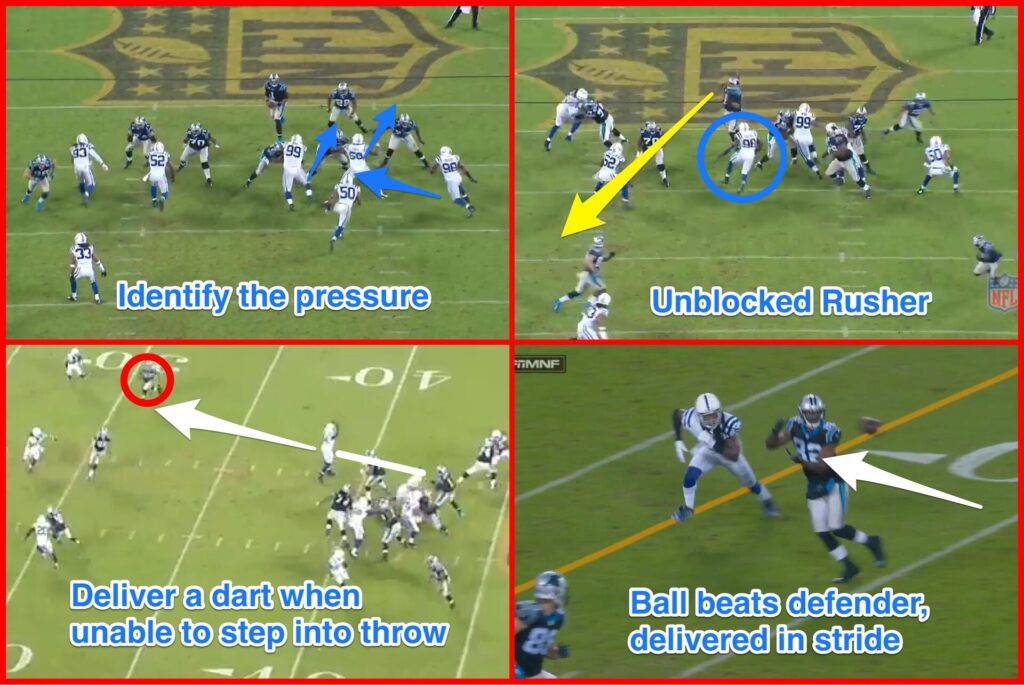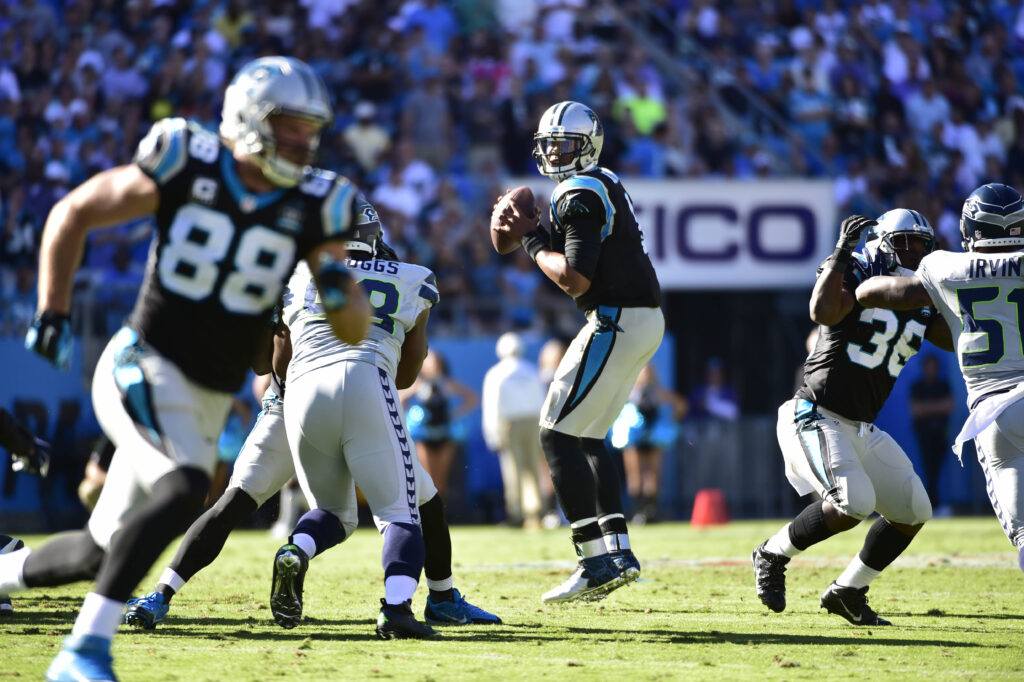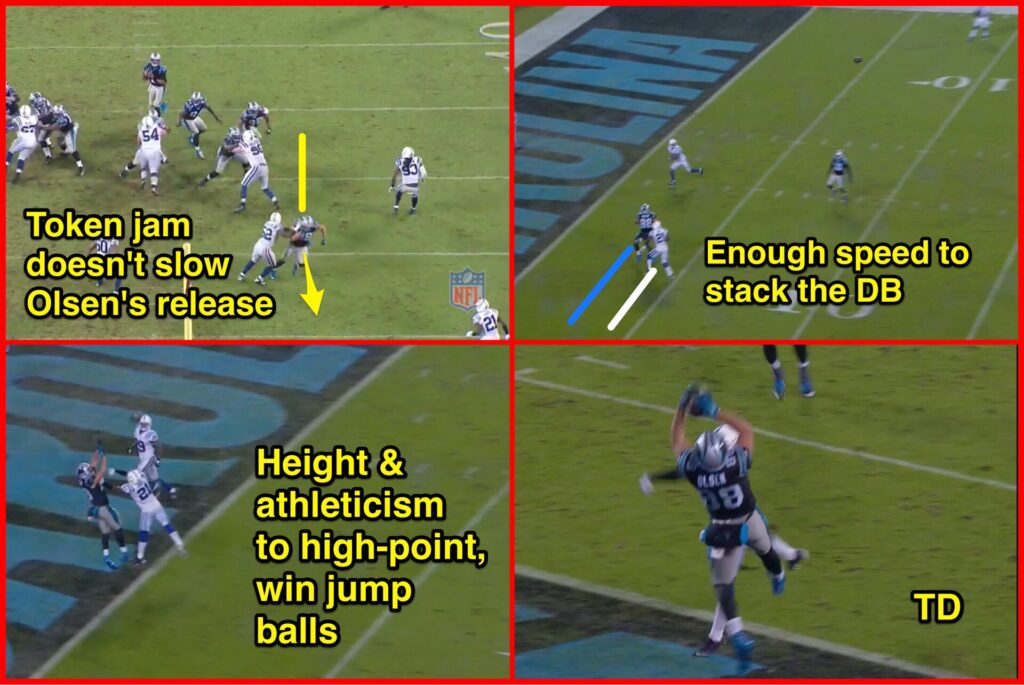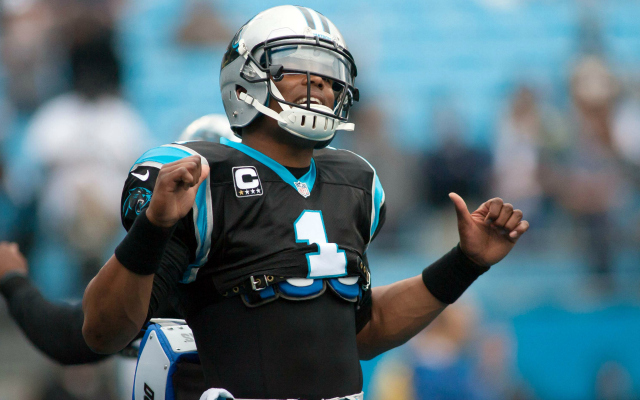Who Knew the NFL’s 4th-ranked Scoring Offense Wore Carolina Blue?
The NFL Rulebook had become a convoluted text mess. Without quoting chapter and verse, it was evident that an obscure clause was violated as the 7-0 Carolina Panthers continued winning games without high-end fantasy football point producers.
Despite the jest, the reality was that the team consistently logged victories without relying on catch-stat performances, an aspect the current aberration of the game greatly favored.
Fantasy football aside, the Panthers proved adept at the sport.
Coming off a surprisingly poor performance against the Broncos, the Packers collided with the Panthers, a team that won more on collective rather than star performance.
Despite being the fourth-highest scoring team in the NFL, the Panthers’ offensive contributors were not the safest bets in non-Carolina markets around the country.
Nonetheless, they posed a significant threat to a Packers team aiming to prevent a speed bump from deteriorating into a slide.
It couldn’t be attributed to smoke and mirrors, as the NFL had no endorsement deal. So, the question remained: How did the Panthers offense get it done? A deeper look was warranted.
Cam-A-Lot
Cam Newton had been the unquestioned star of the Panthers offense, but 400-yard passing games with barrels of TD passes were not the norm.
His reputation for wildly athletic scrambles from the pocket and big downfield throws after escaping pressure remained a severe threat.
Containing Newton in the bag and preventing him from running wild for significant gains on pass plays was an obvious key for any defense, including the Packers’.
However, the more critical development for understanding the 2015 Panthers offense was that Cam wasn’t just a running quarterback—he was Carolina’s bonafide running back option. While this might seem synonymous, it wasn’t.
Skillful scrambling quarterbacks were commonplace in the NFL, but quarterbacks who audibled and called their number as direct snap ball carriers were an entirely different breed.
This significantly changed the blockers a defensive front had to account for, ensuring proper fits and avoiding getting gashed.
The arithmetic on the defense’s right, which would typically close off that side as a run option, remained alive with Newton at quarterback.
The running backs were used as lead blockers, often without any read-option element (below).

In live action, if the Packers couldn’t restrict Newton to modest gains on these plays (3 yards or less), they had to resort to 8-man boxes to ensure they weren’t short a gap in their run front.
The Panthers’ pass offense didn’t rely on sitting back and picking a defense apart for 45 throws a game.
However, if they could entice a reason into 8-man boxes through these unconventional running scheme plays, the passing game and those relatively unfamiliar wide receivers swiftly became open for business.
No Edge, No Chance
A relatively simple theme, it manifested for many teams in the NFL, but its significance heightened against Carolina due to the collection of dynamic runners in their backfield.
Jonathan Stewart, the running back, showcased power in his runs. However, repeatedly throughout the season, he surprised an edge defender responsible for “setting the edge” of the defense with his bounce-out ability (see below).

Green Bay boasted good symmetry and athleticism on the edges of their defense with outside linebackers Julius Peppers and Nick Perry, a characteristic shared by many teams.
The significant trap teams often fell into against the Panthers’ offense was getting “nosy”—playing against the Carolina edge blockers too tightly.
This approach deprived defenders of proper leverage on either Stewart or Newton when they made their surprising burst to the outside.

Securing the edges of both the passing pocket and the run-blocking front was a constant concern for the Packers, something they had to keep in mind every snap throughout the game.
The Panthers developed a quirky habit of persistently challenging their opponents, hitting their heads against the wall for several photos until somebody got “nosy” on the edge.
Once that happened, they would capitalize with a game-breaking run.
Ice the Blitz
The Packers were among those teams that relished putting pressure on opposing quarterbacks with creative rush schemes.
In 2015, one of the most significant aspects of Cam’s game that had grown was his ability to stay calm under pressure and either deliver a quality ball or elude that pressure with his feet.
Although it might be considered taboo to admit, Cam Newton excelled at this critical aspect of big-time quarterbacking far more than Russell Wilson and Andrew Luck, who were typically assumed to be ahead of him.
If the Packers intended to rely heavily on the blitz against Newton, they were playing with fire.
Due to his rare size and cannon arm, Newton displayed great patience when facing the rush, willing to take the hit and still throw a strike under duress (below).

Newton’s pre and post-snap diagnosis of pressure schemes had advanced significantly from where it was just a couple of years ago.
While he was still prone to making mistakes, plenty of examples were on tape of him doing so without a thinned secondary due to a pressure scheme.
This was particularly crucial since his receiving targets weren’t considered world-beaters.
The decision to put fewer people where he’d be throwing the ball was the kind of decision that could lead to a defeat against this particular team.
Olsen, Olsen, Olsen
Due to the Panthers’ insistence on winning on the ground, a super-skilled tight end capable of blocking and catching was the perfect complement.
Greg Olsen stood out as one of those rare players who never came off the field and excelled in all aspects of his job.
While he might not be a glass-eater in run-game blocking like Rob Gronkowski, he was proficient enough that his location in the formation didn’t provide a key to the direction of the play.
The Panthers were more than willing to put the point of attack in the run game right behind him.

Being a significant player in the run game, jamming Greg Olsen in the passing game became more problematic for linebackers.
They had to honor their line and backfield keys and not get caught chasing Olsen, who might be just blocking.
The Panthers’ offense reached its highest level when Olsen got involved in the passing game, functioning both as a vertical seam threat and as a sticks player on “gotta have it” third downs.
The example below illustrated Olsen’s ability to threaten the deep part of the field through the seam and outjump defensive backs for 50-50 balls.

If there’s a single pass catcher on the Panthers’ offense that the Packers had to give extra attention in coverage, it was Greg Olsen.
A blunted Panthers running game with controlled, tight-end passing production was a recipe for success—a formula that other teams were undoubtedly aware of but thus far unable to bring to completion.
When these two elements clicked, the wide receiving corps of Ted Ginn, Jr., Corey Brown, and Jerricho Cotchery usually went to work with timely catches.
To derail the Panthers’ offense from this roll they were on, somebody had to put a complete game together against them. Leaving a hole in the dam in any one of these areas, and defenses inevitably drowned against them.
If the Packers could plug them all, they would be the first. This challenge was a significant one that was immediately apparent when you flipped on the game tape.
Slowing down the Carolina offense was a substantial task. Indeed, that wasn’t something many would’ve thought we’d stay in the heart of November football.

